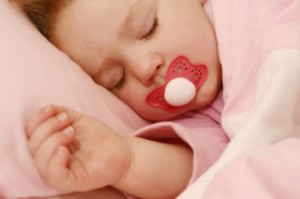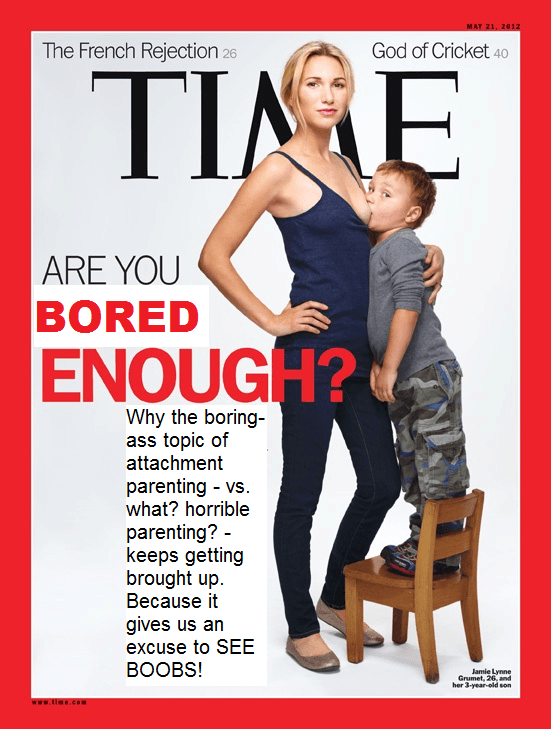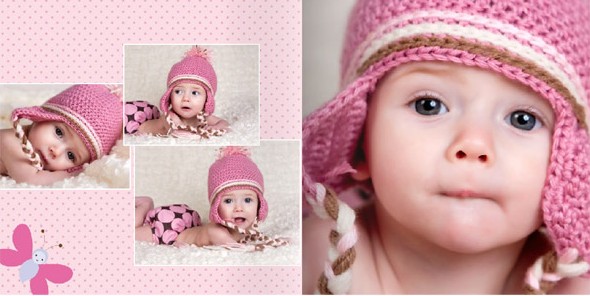 To many mothers, pacifiers seem to be a godsend. The second the baby starts to fuss, pop one in his mouth and you have a quiet, contented baby. But there’s always been something that bothers me about using a pacifier and my kids never did. I can’t exactly put my finger on it, but it has to do with the fact that if baby’s fussing, doesn’t that mean that something is wrong? If he’s hungry, tired, dirty, or wants to be held, will popping a pacifier in his mouth really solve the problem? Won’t that give my baby the message that his real needs are being ignored? Although I have yet to make peace with the pacifier, when I see other babies blissfully sucking away (or better yet, using one to fall asleep on his own!) I wonder why I don’t give pacifiers another chance.
To many mothers, pacifiers seem to be a godsend. The second the baby starts to fuss, pop one in his mouth and you have a quiet, contented baby. But there’s always been something that bothers me about using a pacifier and my kids never did. I can’t exactly put my finger on it, but it has to do with the fact that if baby’s fussing, doesn’t that mean that something is wrong? If he’s hungry, tired, dirty, or wants to be held, will popping a pacifier in his mouth really solve the problem? Won’t that give my baby the message that his real needs are being ignored? Although I have yet to make peace with the pacifier, when I see other babies blissfully sucking away (or better yet, using one to fall asleep on his own!) I wonder why I don’t give pacifiers another chance.
I just read an article at Lamaze.org that makes me feel better about my decision not to use pacifiers. Jeannette Crenshaw, MSN, RN, IBCLC, LCCE, FACCE, says that the risks versus benefits are not as straightforward as they may initially appear.
Reasons to Pop in a Pacifier
In favor of the pacifier (besides for the obvious quick-comfort factor) is research suggesting that babies who suck on pacifiers don’t sleep as deeply and wake more often than those who don’t. While this might not seem like a desirable situation, these are factors believed to reduce the risk of SIDS (Sudden Infant Death Syndrome). For this reason, the AAP’s SIDS-reduction guidelines include the recommendation that babies be given pacifiers during naps and at bedtime (but not to force it if your baby refuses). If you’re breastfeeding, the AAP suggests waiting until nursing is well established or until your baby is about a month old.
Reasons to Pass on the Pacifier
On the flip side, these same benefits (babies who don’t sleep as deeply and wake more often) can be achieved by breastfeeding your baby. Pacifiers are linked to higher rates of ear infections, diarrhea, yeast infections and dental problems. In addition, pacifiers can also interfere with successful breastfeeding, which provides protection against the likelihood of your baby getting ear infections, diarrhea, yeast infections, etc.
Feeling like a Human Pacifier?
What happens to me, in absence of a pacifier, is that my babies come to consider me the Human Pacifier. Whenever they get fussy I pop them on the breast and they’re sucking away as blissfully as any pacifier plugged baby (but more so, considering that they get to suck, nurse, and be held by mommy all at the same time!).
It’s true that babies do at times want to suck something just for comfort, so you may be wondering what’s wrong with using one in between feedings. But there are still more good reasons for avoiding pacifiers, says Dr. Sears, especially in the early weeks while baby is learning to latch on and suck at your breast:
- Pacifiers are artificial nipples. They require a different sucking motion at the breast and can lead to problems with nipple confusion.
- A baby who is given a pacifier instead of being offered the breast may not nurse enough to gain weight adequately.
- Without enough stimulation from baby’s sucking, mother’s milk supply may dwindle. Comfort sucking at the end of a feeding helps to build mother’s milk supply.
- A 1999 study reported in the medical journal Pediatrics showed that mothers who used pacifiers during the first six weeks after birth tended to wean their babies earlier.
- Prolonged pacifier use can lead to crooked teeth. Between two and three years of age, toddlers can cause their upper front teeth to protrude by sucking intensely on a pacifier, especially at night.
It’s understandable that sometimes Mom’s patience wears thin. Or nipples get sore. Or mom is just not available all the time. But it is OK to be a Human Pacifier. As Dr. Sears points out, you want your baby to learn to seek comfort from people, not plastic. Your baby’s need to suck for comfort will diminish with time. Meanwhile, enjoy cuddling with your baby at your breast.
Having said all that, pacifiers are far from the worst thing you can give your baby. The decision to use a pacifier — or not — is up to you. Let go of any guilt or pressure, and try to figure out what works best in your situation. If you have a baby who really seems to need one, then “use it, don’t abuse it, and quickly try to lose it!” Follow DR. BILL’S BINKY ADVICE on how to use the pacifier properly.
- Select a one-piece model that will not break into two pieces, allowing baby to choke on the bulb. Also, be sure it is dishwasher safe and easy to clean.
- Be sure the base of the pacifier has ventilation holes. Avoid large circular shields that may obstruct baby’s nasal passages when baby draws in the pacifier during intense sucking.
- One size doesn’t fit all. Choose a smaller, shorter, newborn-sized pacifier for the early months.
- Pacifiers come in a variety of nipple shapes. Some are symmetrically round, like a bottle nipple. Others are preshaped, supposedly to duplicate the elongated, flattened breast nipple during sucking. Preshaped nipples, however, may not always fit baby’s mouth, especially if the pacifier turns during sucking or is inserted upside down. Some pacifier manufacturers claim orthodontic benefits, but these are questionable. Try various shapes and let baby’s discerning mouth decide.
- Avoid attaching the pacifier to a string or ribbon around baby’s neck or pinning the pacifier string onto baby’s clothing. This is a setup for strangulation. it is better to keep one hand on baby and the other hand on the pacifier. Or use a pacifier clip with a ribbon that is too short to pass around baby’s neck (Like this elegant personalize pacifier clip!)
- Avoid making your own pacifier out of a cotton-stuffed bottle nipple. Baby may suck the cotton through the hole.
- Resist the temptation to sweeten the offering by dipping the pacifier in honey or syrup. If baby does not yet have teeth, he is too young for honey or syrup. If he has teeth, he is too old for the decay-producing sweets – and probably the pacifier, too. If he has to be enticed to suck by sweetening, he would probably benefit from some other form of comforting – having a change of scenery, going out in the fresh air, playing, cuddling with you, rocking to sleep, and being held more.
Image from mommyspeechtherapy.com
What’s your pacifier preference? Leave a comment below and let us know!




